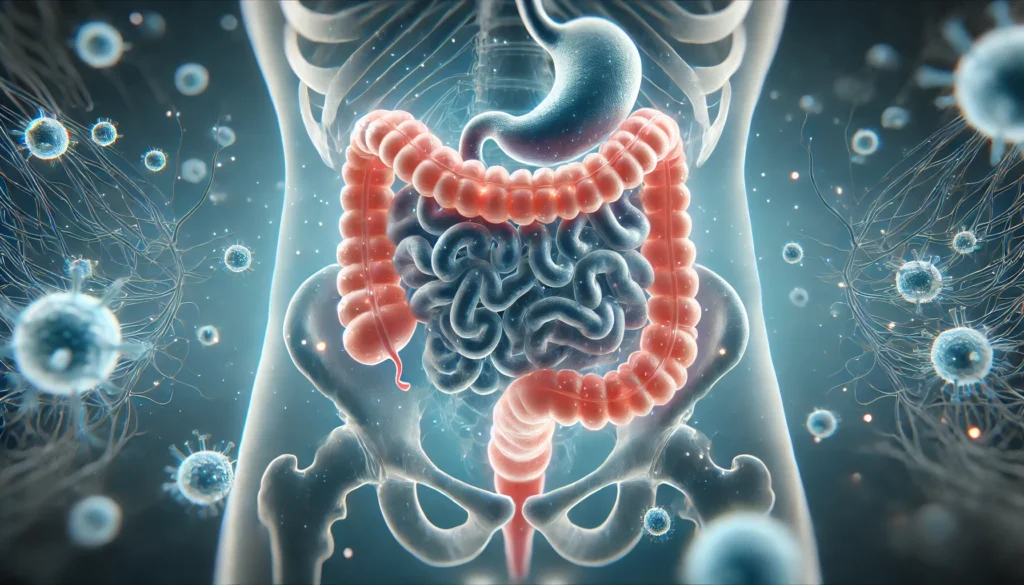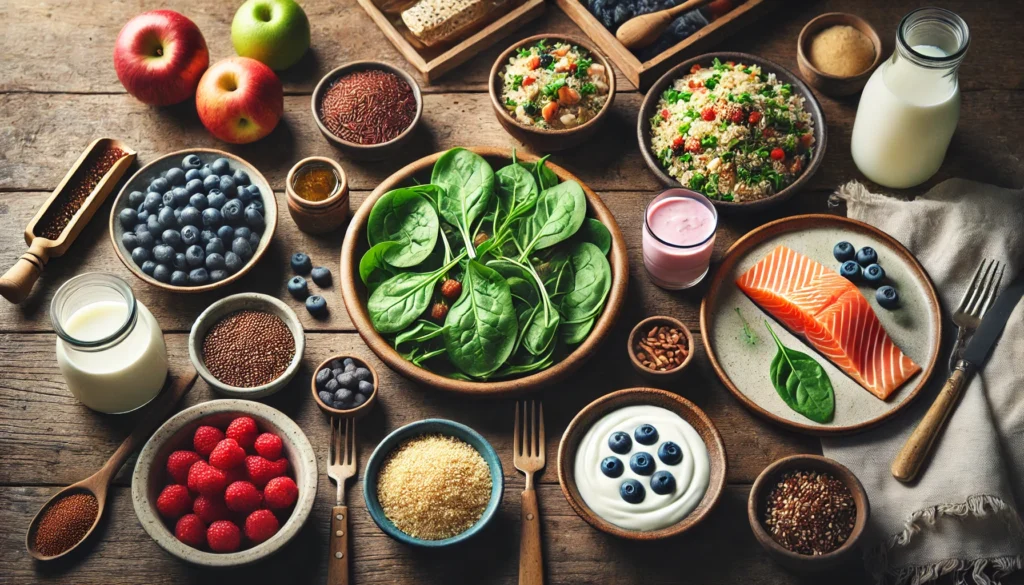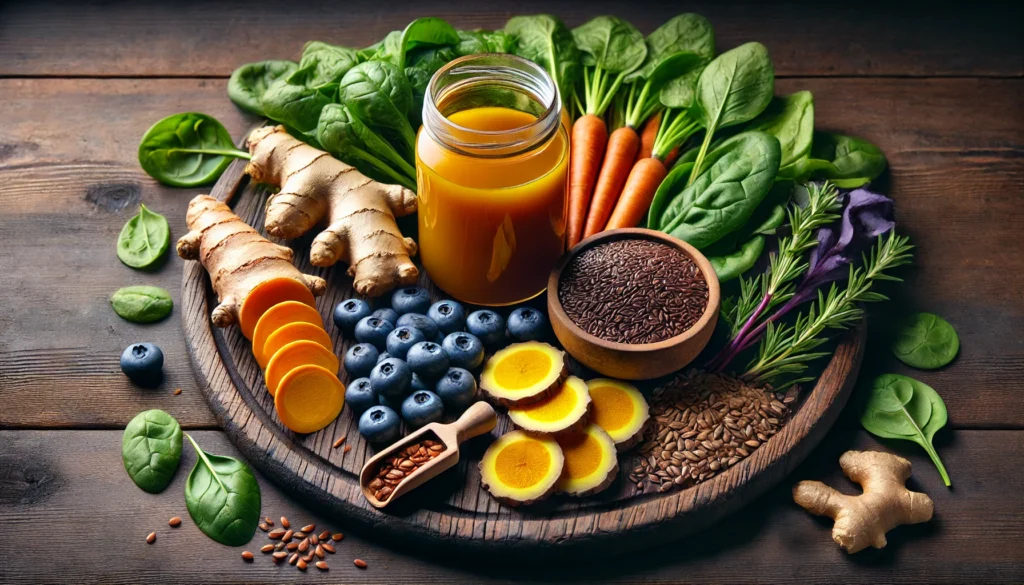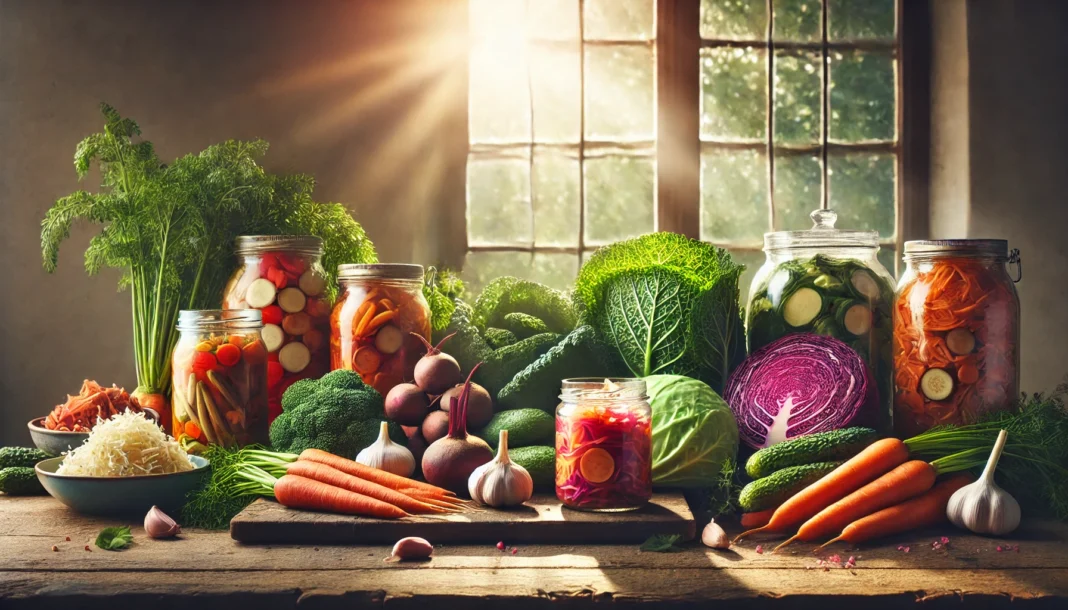Introduction
In recent years, the human gut has taken center stage in medical research, wellness culture, and clinical nutrition—and for good reason. As it turns out, your gut is not just a digestive organ but a vast biological ecosystem that governs immunity, mood, metabolism, and even brain function. If your gut is compromised, the ripple effects can manifest as bloating, fatigue, anxiety, skin issues, autoimmunity, and chronic inflammation. For millions of people experiencing digestive problems, the quest to understand how to fix your gut is more than a wellness trend—it’s a journey back to vitality, resilience, and total health.
You may also like: The Science of Gut Repair: How to Heal Leaky Gut Syndrome Naturally with a Proven Gut Healing Diet
The gut, often referred to as the gastrointestinal (GI) tract, consists of a complex network of organs that digests food, absorbs nutrients, and eliminates waste. But deeper within lies a thriving community of bacteria, fungi, viruses, and other microbes collectively known as the gut microbiome. When the balance of this microbiome is disturbed—by poor diet, stress, antibiotics, toxins, or infection—symptoms of gut dysfunction begin to emerge. If you’re wondering how to heal your gut or what foods can aid in gut repair, you’re tapping into one of the most transformative areas of health science today.
This article dives deep into the biology of gut healing. We’ll explore evidence-based strategies for reversing gut damage, restoring microbial diversity, and choosing the best foods for gut health. Whether you’re dealing with bloating, constipation, leaky gut, or inflammatory bowel disease, this comprehensive guide will show you how to heal your gut naturally—safely, sustainably, and scientifically.

Gut What Is: Understanding the Role and Structure of Your Gut
To understand how to heal gut health, we first need to answer a fundamental question: Gut, what is it really? At its core, the gut includes the mouth, esophagus, stomach, small intestine, large intestine, rectum, and anus. However, when people refer to “gut health,” they’re usually talking about the small and large intestines, where the majority of digestion and microbiome activity occur.
The small intestine is responsible for breaking down food into its usable components, like amino acids, fatty acids, vitamins, and minerals. These nutrients are absorbed into the bloodstream to fuel the body. Meanwhile, the large intestine, or colon, is home to trillions of microbes that ferment undigested fibers and regulate immune responses.
Damage to the intestinal lining, known as increased intestinal permeability or “leaky gut,” allows undigested particles and toxins to enter the bloodstream. This can trigger inflammation, autoimmune reactions, and systemic health issues. The more we understand the structure and function of the gut, the clearer it becomes that repairing the gut is not just about digestion—it’s about total systemic healing.
How to Fix Gut Health: Root Causes of Gut Imbalance
Before we can dive into how to heal your gut, it’s essential to understand what causes gut problems in the first place. Most cases of gut dysfunction result from a combination of environmental, dietary, and lifestyle factors. Here are the most common culprits:
Poor diet: Ultra-processed foods high in sugar, refined grains, additives, and inflammatory oils can destroy the diversity of gut bacteria and damage the intestinal lining. A lack of fiber, especially prebiotic fiber, starves beneficial microbes.
Antibiotics and medications: While antibiotics are life-saving, they also wipe out good bacteria alongside bad. Other drugs, including NSAIDs, birth control pills, and acid blockers, can damage the gut lining or disrupt microbial balance.
Chronic stress: Psychological stress alters gut motility, reduces digestive enzyme production, and disrupts the gut-brain axis—negatively impacting microbial composition.
Environmental toxins: Pesticides, heavy metals, plastics, and endocrine disruptors may all contribute to gut inflammation and dysbiosis (microbial imbalance).
Infections: Parasites, Candida overgrowth, and pathogenic bacteria like Clostridium difficile can disrupt the microbial ecosystem and impair digestion.
By identifying and removing the root causes of gut dysfunction, we pave the way for real, lasting gut repair and health restoration.

How to Heal Your Gut: Foundational Principles
If you’re wondering how can I heal my gut, it’s important to approach the process in phases. Gut healing isn’t a quick fix—it’s a layered, adaptive process that involves repairing the lining, rebalancing bacteria, and optimizing digestion. Here’s how to begin:
Remove irritants: Eliminate processed foods, added sugars, alcohol, and food sensitivities (gluten, dairy, soy, etc.). These are major contributors to leaky gut and inflammation.
Replace missing components: Support digestion with enzymes, hydrochloric acid (HCl), or bile salts if needed. This improves nutrient absorption and eases the burden on the gut.
Reinoculate the microbiome: Introduce beneficial bacteria through probiotics and prebiotics, either via supplements or best foods for gut health, like fermented vegetables and resistant starches.
Repair the lining: Use nutrients like L-glutamine, zinc carnosine, collagen, and omega-3s to rebuild the mucosal barrier and reduce permeability.
Rebalance your lifestyle: Prioritize sleep, reduce stress, and embrace mindful eating. The nervous system’s role in digestion is critical for full recovery.
These five pillars represent the gold standard in gut restoration, and science continues to support their efficacy across a variety of digestive and inflammatory conditions.

Best Diet for Gut Health: The Science of Gut-Nourishing Nutrition
When it comes to how to fix gut health, diet is not just one component—it is the foundation. A gut-supportive diet removes harmful triggers and provides the nutrients and fibers needed to nourish the microbiome and intestinal lining.
The best diet for gut health is rich in whole, unprocessed foods with high phytonutrient and fiber content. It emphasizes plant diversity, fermented foods, healthy fats, clean proteins, and anti-inflammatory herbs and spices. Scientific evidence highlights the Mediterranean diet and plant-forward eating as models of gut-healthy nutrition.
Crucially, diversity is key. A wide array of plant fibers supports a more diverse and resilient microbiome. Research consistently shows that individuals who eat 30 or more different plant foods per week have better gut microbial diversity than those who eat fewer.
Unlike restrictive “cleanse” diets, gut healing focuses on abundance—feeding the body and microbes with the right materials to regenerate and thrive.
Best Foods for Gut: What to Eat to Repair and Strengthen
If you’re asking how to heal intestines or how to heal your gut naturally, your food choices are your greatest tool. The best foods for gut are nutrient-dense, anti-inflammatory, and rich in prebiotic fibers and polyphenols. Here’s a closer look at the categories of gut-healing foods:
Fermented foods: These naturally contain probiotics—live bacteria that help restore microbial balance. Examples include sauerkraut, kimchi, kefir, miso, yogurt (unsweetened), and kombucha. Regular consumption improves microbiota diversity and reduces inflammation.
Prebiotic-rich vegetables: Foods like garlic, onions, leeks, asparagus, artichokes, and green bananas are rich in inulin and resistant starch—fibers that feed good bacteria and produce short-chain fatty acids (SCFAs) like butyrate, which heal the gut lining.
Bone broth and collagen: These contain amino acids like glycine and glutamine that support mucosal repair, reduce permeability, and rebuild the gut lining.
Omega-3 rich fats: Fatty fish (like salmon), walnuts, flaxseeds, and chia seeds reduce inflammation and promote healing of intestinal tissues.
Polyphenol-rich foods: Berries, green tea, olive oil, and turmeric offer antioxidant protection and feed beneficial bacteria.
By consistently incorporating these best foods for healthy gut into your diet, you’ll support microbial rebalance and physical gut healing simultaneously.
How to Heal Gut Health After Antibiotics or Illness
Antibiotic use, food poisoning, or a stomach virus can devastate your microbiome. During these vulnerable times, it’s essential to apply focused strategies for repair gut health and avoid long-term damage.
After antibiotics, high-dose, multi-strain probiotics (preferably spore-based or lactobacillus/bifidobacterium blends) can help recolonize the gut. However, probiotics are only part of the equation. Feeding those bacteria with fiber-rich foods and prebiotics is just as crucial.
Soothing the gut lining with L-glutamine, aloe vera, and slippery elm can reduce inflammation and encourage tissue regeneration. During recovery, avoid alcohol, NSAIDs, and highly processed foods, which can delay healing.
Most importantly, take a long-term view. Even if you feel better symptomatically, the microbiome takes months to stabilize. Patience, consistency, and gentle support are key to restoring gut equilibrium and immune function.
Gut Repair and Emotional Wellbeing: The Gut-Brain Connection
As gut health improves, many people report not only better digestion but also greater emotional stability, mental clarity, and reduced anxiety. This is no coincidence—the gut-brain axis is a real, bi-directional communication network involving hormones, neurotransmitters, and immune signals.
The gut produces over 90% of the body’s serotonin and houses the enteric nervous system, sometimes called the “second brain.” Dysbiosis can lead to altered mood, stress intolerance, and even depression. Healing the gut has been associated with improved emotional regulation and cognitive function.
Stress management, mindfulness, and vagal nerve stimulation (like humming, deep breathing, or cold exposure) can further enhance this communication pathway and support the healing process. When you support your gut, your whole self heals—body, brain, and beyond.

How to Heal Your Gut Naturally Without Supplements
For those asking how to heal your gut naturally or how can I heal my gut without relying on pills, lifestyle and food strategies offer powerful answers. While supplements can speed recovery, whole-food approaches and behavioral shifts are profoundly effective.
Natural gut healing involves eating in a relaxed state, chewing thoroughly, and embracing mealtimes as opportunities to nourish, not rush. It means eating fermented foods daily, focusing on seasonal produce, and minimizing inflammatory triggers like sugar, seed oils, and alcohol.
Additionally, movement aids digestion. Gentle exercise like walking, yoga, and stretching enhances intestinal motility, lymphatic drainage, and circulation to the gut wall.
Lastly, natural healing embraces connection: community meals, laughter, gratitude, and nature exposure have all been linked to better gut outcomes. Science is finally catching up to what traditional cultures knew: that food, rest, and joy are medicine.
Frequently Asked Questions
1. What are the first signs of an unhealthy gut?
Early symptoms of poor gut health include bloating, gas, constipation, diarrhea, and heartburn. However, gut dysfunction can also manifest as brain fog, fatigue, skin rashes, joint pain, anxiety, or poor immunity. When gut bacteria become imbalanced or the intestinal lining becomes damaged, toxins and food particles can enter the bloodstream and create systemic inflammation. Listening to these subtle clues early on can help you take steps to repair gut health before more serious issues arise.
2. How long does it take to heal your gut?
The timeline for gut healing varies based on severity, consistency, and individual health factors. Mild gut imbalances may resolve within a few weeks of dietary and lifestyle changes, while chronic conditions like leaky gut, SIBO, or IBD may take several months to a year. Scientific studies show that microbial diversity can begin improving in as little as three days with dietary change, but full gut repair and restoration of immune tolerance often require 3 to 6 months of focused effort. Patience and consistency are key.
3. Can you fix your gut without probiotics?
Yes, it’s possible to fix your gut without supplements by emphasizing probiotic-rich foods and supportive lifestyle changes. Foods like sauerkraut, kefir, yogurt, miso, and kimchi naturally contain beneficial bacteria. Prebiotic fibers from vegetables feed those bacteria and help them colonize. Daily exposure to nature and reduced use of disinfectants and sanitizers also contribute to microbial diversity. While supplements may help in certain cases, they aren’t always essential for restoring balance.
4. What foods heal the gut lining?
Nutrients that rebuild the gut lining include collagen, L-glutamine, zinc, vitamin A, omega-3s, and polyphenols. Foods like bone broth, wild-caught salmon, pumpkin seeds, blueberries, turmeric, and spinach support mucosal repair and reduce inflammation. Fermented foods also enhance microbial resilience and produce compounds like butyrate, which directly heal the epithelial layer. The best diet for gut health will always include these anti-inflammatory and tissue-repairing components.
5. Are there any foods that harm gut health?
Yes, certain foods disrupt the microbiome and damage the gut lining. These include refined sugars, artificial sweeteners (like sucralose), trans fats, seed oils, alcohol, and heavily processed packaged foods. For some people, gluten and dairy may also contribute to intestinal inflammation, especially if leaky gut is present. Reducing or eliminating these triggers is essential when learning how to heal your gut and reduce inflammation long-term.
6. How do I know if my gut is healed?
Signs of gut healing include regular, pain-free bowel movements, absence of bloating or reflux, better energy, improved mood, clearer skin, and more robust immunity. You may also notice fewer food sensitivities, better stress tolerance, and improved sleep. If symptoms return after exposure to a food or stressor, it may indicate lingering gut dysfunction. Tracking changes over several months and possibly working with a practitioner can help confirm your progress.
7. Can gut health affect skin and acne?
Absolutely. The gut and skin are closely connected via the gut-skin axis. Gut inflammation or dysbiosis can trigger systemic inflammation that manifests as acne, eczema, psoriasis, or rosacea. Toxins that leak from a compromised gut can activate immune responses in the skin. Healing the gut often improves skin clarity, reduces breakouts, and restores natural glow. Diet, stress, and microbiome balance all play key roles in skin health.
8. Is fasting good for gut healing?
Intermittent fasting can benefit gut health by giving the digestive system time to rest, repair, and regulate. During fasting, gut motility improves, inflammation may decrease, and autophagy (cellular cleanup) is activated. However, fasting should be done mindfully and may not be appropriate for everyone, especially those with adrenal fatigue, eating disorders, or blood sugar issues. It’s best used as part of a balanced lifestyle that includes gut-healing foods and rhythms.
9. How does stress damage the gut?
Chronic stress alters the gut-brain axis, increases cortisol, reduces digestive enzyme production, and increases gut permeability. It also changes the composition of the gut microbiome, favoring pathogenic strains over beneficial ones. This can lead to symptoms like IBS, indigestion, food sensitivities, and inflammation. Managing stress through mindfulness, breathwork, nature, and sleep is a core part of how to heal gut health naturally and sustainably.
10. Do I need to follow a specific diet to heal my gut?
While there’s no one-size-fits-all diet, certain principles apply universally to gut healing. A diet rich in diverse vegetables, fermented foods, healthy fats, and clean proteins supports microbial balance and tissue repair. Reducing inflammatory foods like sugar and processed grains is key. Some people may benefit from elimination diets (like low-FODMAP or autoimmune paleo) for a time, but the goal is always to reintroduce a wide variety of gut-nourishing foods in the long run.

Conclusion
Healing the gut is one of the most profound acts of self-care and preventative medicine you can undertake. By understanding the root causes of dysfunction and embracing scientifically backed strategies, you empower your body to regenerate, balance, and thrive. Whether you’re exploring how to fix your gut after years of poor diet, searching for the best foods for gut health, or committed to learning how to heal your gut naturally, the answers lie in nourishing foods, consistent habits, and evidence-based guidance.
The gut doesn’t just digest your meals—it shapes your immunity, mental health, and even your future. When you repair gut health, you don’t just resolve symptoms—you unlock a new level of energy, clarity, and well-being. It’s never too late to begin this journey. The path to gut healing is the path back to yourself.
Was this article helpful? Don’t let it stop with you. Share it right now with someone who needs to see it—whether it’s a friend, a colleague, or your whole network. And if staying ahead on this topic matters to you, subscribe to this publication for the most up-to-date information. You’ll get the latest insights delivered straight to you—no searching, no missing out.
Further Reading:
Signs of an Unhealthy Gut and What to Do About It
Elucidating the role of diet in maintaining gut health to reduce the risk of obesity



